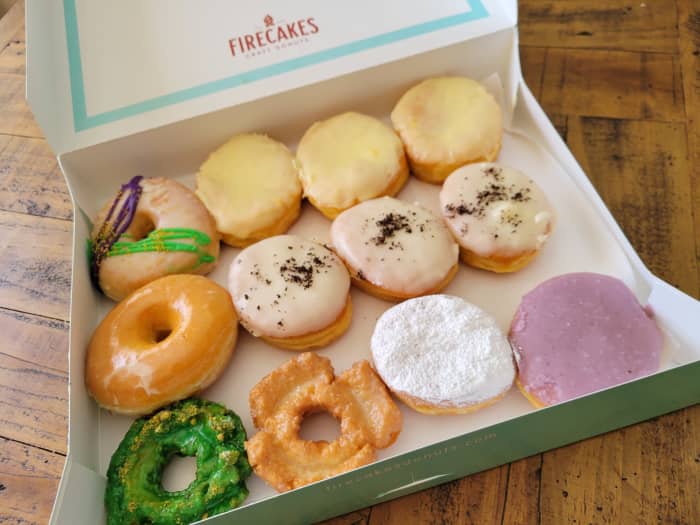This post was originally published on this site
“‘Paczki’”
Fat Tuesday, or Mardi Gras, is the day of indulgence before the Christian fast known as Lent. For urban centers with large Polish and Polish-American populations, including Detroit, Cleveland, Pittsburgh and Chicago, indulgence often means a deep-fried paczki. Or, 12.
Proper pronunciation of this sinful, traditional jelly- or creme-filled pastry, at least among non-Polish speakers, incites a debate only rivaled by the fight over which bakery does them best. Most people land somewhere around “POONCH-key.”
But add in local dialect, or the effects of other Fat Tuesday imbibing, and “POWNCH-key” or “PAUNCH-key” sometimes emerges. “PACK-zee”? Not even close. Worst of all, however, is defaulting to “doughnut.”
The recipe is similar to German, Jewish and Italian filled doughnuts, but traditional paczki contain a splash of Polish vodka called Spiritus, says Eater.com.
One of Pittsburgh’s most popular bakeries was offering vanilla buttercream, chocolate buttercream, strawberry buttercream, lemon, raspberry, apricot and custard this year.

COVID-19, a hiring crunch and strained small businesses. Signs of our times, in Chicago.
Tim Rostan
Poland itself digs in on Fat Thursday, which was February 24 this year. Chicago bakeries report they typically serve tens of thousands of paczki (yup, that’s the plural) per day from Thursday through Tuesday.

Our flight had a couple of old-fashioneds, too. That’s lemon-curd paczki on top, the hands-down favorite.
Rachel Beals
In New Orleans, Fat Tuesday is the final day of Carnival, which began Feb. 25. And Mardi Gras serves up another favorite sweet tradition: the king cake.
It is believed that the king cake originated in France and was brought to New Orleans in 1870. The French version of this delicacy is made of an almond-filled puff pastry that gives off a flaky texture. It also features a decorative pattern and is sometimes topped with a paper crown. Perhaps it’s most famous for the hidden baby charm.
Opinion: The toxic tale of those coveted Mardi Gras beads
Manny Randazzo King Cakes, a bakery voted one of New Orleans’ top king cake makers, says the king cake tradition was brought to America from France in the 1870s. The idea of a baby inside was hatched much later.
In the 1940s, a baker named Donald Entringer solidified the baby-in-the-cake tradition when a traveling salesman approached him trying to offload small porcelain dolls. Entringer began baking the porcelain dolls into his king cakes to symbolize baby Jesus, and the tradition was born. When he ran out of the ceramic babies, he followed the lead of his fellow New Orleans bakeries and switched to plastic.
Today, you’re most likely to find a plastic baby in your cake, but since tiny dolls weren’t always widely available, coins and beans have historically been substituted.
So what does it mean to find the baby in your slice? (Hopefully with your molars intact, or, God willing, not the next the next day!) Many believe a year of good luck will come your way; others say you’re on the hook for next year’s cake.
And for some, the baby in your slice means a bun in the oven.


